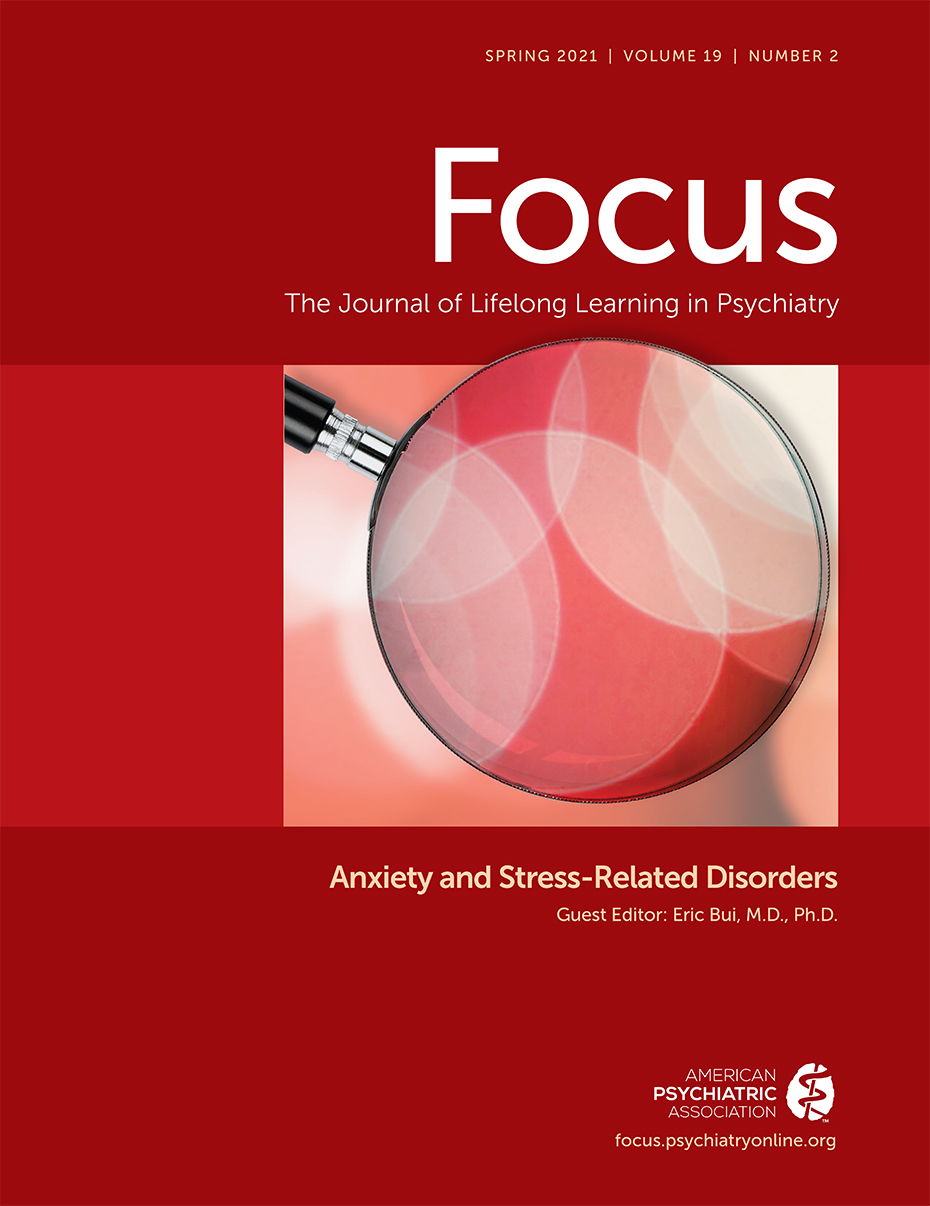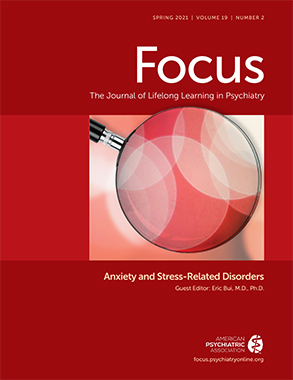Given space limitations and varying reprint permission policies, not all of the influential publications the editors considered reprinting in this issue could be included. This section contains abstracts from additional articles the editors deemed well worth reviewing.
Isolating the Effects of Mindfulness Training Across Anxiety Disorder Diagnoses in the Unified Protocol
Woods BK, Sauer-Zavala S, Farchione TJ, et al.
The Unified Protocol for Transdiagnostic Treatment (UP; Barlow et al., 2011) has recently demonstrated statistically equivalent therapeutic effects compared with leading cognitive behavioral therapy (CBT) protocols for anxiety disorders designed to address disorder-specific symptoms (i.e. single-disorder protocols [SDP]); Barlow et al., 2017). Although all treatment protocols included similar evidence-based CBT elements, investigation of those related to symptom improvement in the UP is warranted. Because the UP is unique from the SDPs for its inclusion of mindfulness, the present study evaluated mindfulness as a primary treatment element. We explored whether UP participants, compared with SDP, demonstrated greater improvements in mindfulness from pre- to posttreatment, and whether these improvements predicted posttreatment severity across anxiety disorder diagnoses. Participants were individuals with a principle anxiety disorder (N=179) randomized to receive either the UP or SDP. Results indicated significant improvements pre- to posttreatment in mindfulness for participants receiving either the UP or SDP. However, at posttreatment, mindfulness scores were significantly greater for the UP condition. At the diagnosis level, posttreatment scores in mindfulness were significantly greater in the UP condition than the respective SDP conditions for principal Generalized Anxiety Disorder (GAD) and Social Anxiety Disorder (SOC). Moreover, results suggest that change in mindfulness is related to posttreatment severity, when moderated by treatment condition, but only for participants with principal GAD. Taken together, the UP is effective in improving mindfulness in a sample with heterogeneous anxiety disorders, but this change seems particularly relevant for reduction in symptom severity for individuals with principal GAD.
Copyright 2020 by Elsevier
Pharmacological Treatments for Generalised Anxiety Disorder: A Systematic Review and Network Meta-Analysis
Slee A, Nazareth I, Bondaronek P, et al.
BACKGROUND: Generalized anxiety disorder is a disease that can be associated with substantial dysfunction. Pharmacological treatment is often the first choice for clinicians because of the cost and resource constraints of psychological alternatives, but there is a paucity of comparative information for the multiple available drug choices. METHODS: A systematic review and network meta-analysis was performed on randomized trials in adult outpatients with generalized anxiety disorder identified from MEDLINE, Web of Science, Cochrane Library,
ClinicalTrials.gov, Chinese National Knowledge Infrastructure (CNKI), Wanfang data, Drugs@FDA and commercial pharmaceutical registries. Placebo and active control trials were included. Data were extracted from all manuscripts and reports. Primary outcomes were efficacy (mean difference [MD] in change in Hamilton Anxiety Scale Score) and acceptability (study discontinuations for any cause). We estimated summary mean treatment differences and odds ratios using network meta-analyses with random effects. This study is registered with PROSPERO, number CRD42018087106. FINDINGS: Studies were published between Jan 1, 1994 and Aug 1, 2017, in which 1992 potential studies were screened for inclusion. This analysis is based on 89 trials, which included 25 441 patients randomly assigned to 22 different active drugs or placebo. Duloxetine (MD -3·13, 95% credible interval [CrI] -4·13 to -2·13), pregabalin (MD -2·79, 95% CrI -3·69 to -1·91), venlafaxine (MD -2·69, 95% CrI -3·50 to -1·89), and escitalopram (MD -2·45, 95% CrI -3·27 to -1·63) were more efficacious than placebo with relatively good acceptability. Mirtazapine, sertraline, fluoxetine, buspirone, and agomelatine were also found to be efficacious and well tolerated but these findings were limited by small sample sizes. Quetiapine (MD -3·60 95% CrI -4·83 to -2·39) had the largest effect on HAM-A but it was poorly tolerated (odds ratio 1·44, 95% CrI 1·16–1·80) when compared with placebo. Likewise, paroxetine and benzodiazepines were effective but also poorly tolerated when compared with placebo. Risk of reporting bias was considered low, and when possible all completed studies were included to avoid publication bias. INTERPRETATION: To our knowledge, this is the largest contemporary review of pharmacological agents for the treatment of generalized anxiety disorder by use of network analysis. There are several effective treatment choices for generalized anxiety disorder across classes of medication. The failure of initial pharmacological therapy might not be a reason to abandon a pharmacological treatment strategy. FUNDING: No funding was received for this research.
Copyright 2019 by Elsevier. All rights reserved.
Worry, Avoidance, and Coping During the COVID-19 Pandemic: A Comprehensive Network Analysis
Taylor S, Landry CA, Paluszek MM, et al.
J Anxiety Disord 2020; 76:102327
Background: Many psychological factors play a role in the COVID-19 pandemic, including various forms of worry, avoidance, and coping. Adding to the complexity, some people believe the threat of COVID-19 is exaggerated. We used network analysis to investigate how these diverse elements are interrelated.
Methods: A population-representative sample of 3075 American and Canadian adults completed an online survey, including measures of COVID-19-related worry, avoidance, self-protective behaviors, and other variables.
Results: The network contained three major hubs, replicated across gender and age groups. The most important hub centered around worries about the dangerousness of COVID-19, and formed the core of the previously identified COVID Stress Syndrome. The second most important hub, which was negatively correlated with the first hub, centered around the belief that the COVID-19 threat is exaggerated, and was associated with disregard for social distancing, poor hand hygiene, and antivaccination attitudes. The third most important hub, which was linked to the first hub, centered around COVID-19-related compulsive checking and reassurance-seeking, including self-protective behaviors such as panic buying and use of personal protective equipment.
Conclusion: Network analysis showed how various forms of worry, avoidance, coping, and other variables are interrelated. Implications for managing disease and distress are discussed.
Copyright 2020 by Elsevier. All rights reserved.
Pharmacotherapy for Generalized Anxiety Disorder in Adult and Pediatric Patients: An Evidence-Based Treatment Review
Strawn JR, Geracioti L, Rajdev N, et al.
Expert Opin Pharmacother 2018; 19:1057–1070
Generalized anxiety disorder (GAD) often begins during adolescence or early adulthood and persists throughout the lifespan. Randomized controlled trials support the efficacy of selective serotonin and selective serotonin norepinephrine reuptake inhibitors (SSRIs and SNRIs, respectively), as well as benzodiazepines, azapirones, antiadrenergic medications, melatonin analogs, second-generation antipsychotics, kava, and lavender oil in GAD. However, psychopharmacologic treatment selection requires clinicians to consider multiple factors, including age, comorbidity, and prior treatment. Areas covered: The authors review the literature concerning pharmacotherapy for pediatric and adult patients with GAD with specific commentary on the efficacy and tolerability of selected agents in these age groups. The authors describe an algorithmic approach to the pediatric and adult patient with GAD and highlight considerations for the use of selected medications in these patients. Expert opinion: In adults with GAD, SSRIs and SNRIs represent the first-line psychopharmacologic treatment while second-line pharmacotherapies include buspirone, benzodiazepines, SGAs, and pregabalin. In pediatric patients with GAD, SSRIs should be considered the first line pharmacotherapy and psychotherapy enhances antidepressant response.
Toward an Evidence-Based Unified Psychodynamic Protocol for Emotional Disorders
Leichsenring F, Steinert C
J Affect Disord 2018; 232:400–416
BACKGROUND: In psychotherapy research unified, transdiagnostic and modular treatments have emerged. This is true for both cognitive-behavioral therapy and psychodynamic therapy. Recently, two unified psychodynamic protocols were presented, one for anxiety disorders, another for depressive disorders. Integrating the treatment principles for these two highly prevalent disorder groups into one protocol for “emotional disorders” may be useful for both clinical practice and training in psychotherapy. METHODS: After updating the evidence for psychodynamic therapy in anxiety and depressive disorders in terms of randomized controlled trials (RCTs) by a systematic search, the treatment elements applied in those RCTs providing evidence for the efficacy of psychodynamic therapy in depressive or anxiety disorders were reviewed and compared. RESULTS: Twenty-seven RCTs for anxiety or depressive disorders were identified. A review revealed a high overlap between the principles used for the psychodynamic treatment of anxiety and depressive disorders, reflecting the transdiagnostic nature of psychodynamic therapy. The overlap suggested to integrate the identified treatment principles into one unified psychodynamic protocol for “emotional disorders” (UPP-EMO). As a result, seven treatment principles or modules were distilled which can be flexibly applied depending on the patient´s symptoms and needs. In addition, a separate module addresses diagnostic assessment. Across modules, a focus on resources has been included. LIMITATIONS: Despite being based on RCTs, UPP-EMO has not yet been examined in an RCT - which is planned as a next step. CONCLUSIONS: As psychodynamic therapy is transdiagnostic in origin focusing on core underlying processes of mental disorders, acceptability of UPP-EMO among psychodynamic psychotherapists is likely to be high.
Copyright 2017 by Elsevier

